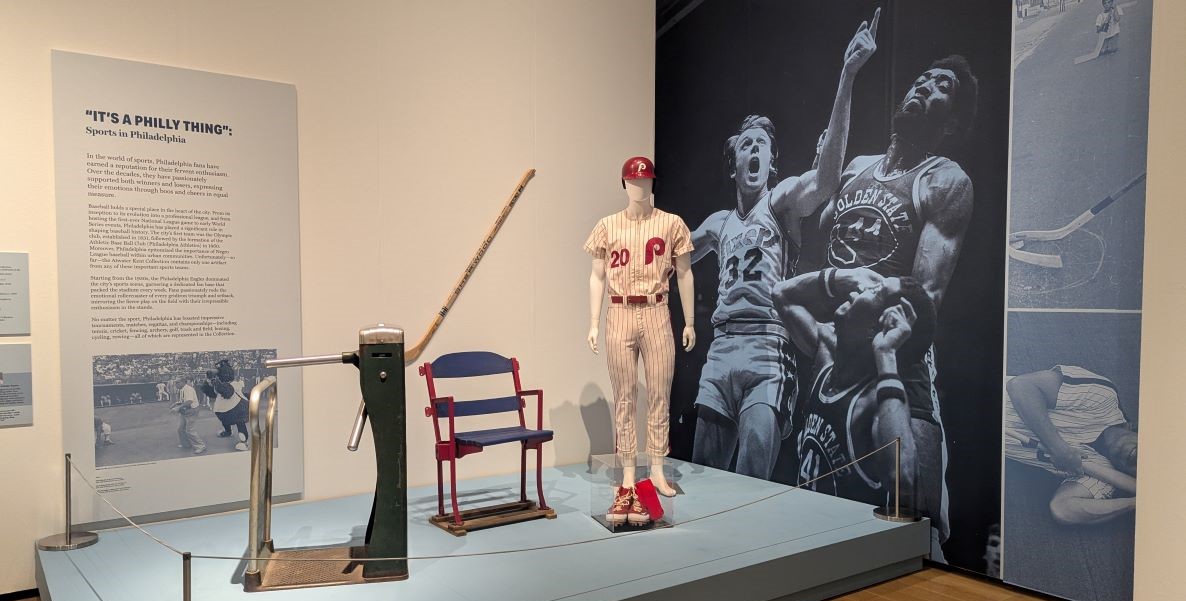Representing 350 years of Philadelphia history, Philadelphia Revealed: Unpacking the Attic is an interactive exhibition of over 600 artifacts from the Atwater Kent Collection (AKC) at Drexel University on display at The Pennsylvania Academy of the Fine Arts (PAFA). Hundreds of historical images, multimedia features, and hands-on elements highlight the AKC’s earliest acquisitions and absorbed collections, national celebrations, the city’s urban development and civic history, sports, salvaged material and relics, manufacturing and retail milestones, and art and music of Philadelphia.
It has taken more than 80 years to assemble these Philadelphia stories. Many of the pieces have never been displayed before.
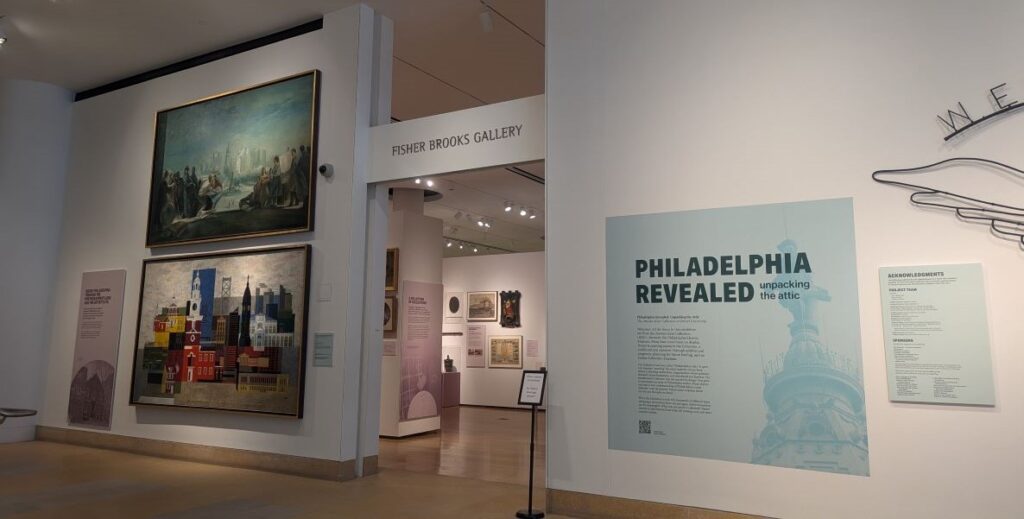
Stacey Swigart is the director of the AKC. Originally from Phoenixville, her early career took her to several city museums and historic preservation organizations before she ended up being the last person hired by the Philadelphia History Museum for its post-closure activities. She’s been with AKC since 2019, became director in 2022, and is part of the team that curated the objects selected for the exhibit out of the more than 130,000 pieces in the collection (including tens of thousands of photographs).
The idea for the exhibit was inspired by Drexel’s work taking over stewardship of the former Atwater Kent Museum collection.
“We knew at some point we wanted to do some sort of exhibition related to the various objects,” Swigart explains. “And how do you do that? We put up an exhibit last year here [at PAFA] called Seeing Philadelphia but it was small, just 2D materials. This one we knew we wanted to delve a little bit deeper, but how do you do that? How do you tell the story of Philadelphia?”
To do that, they decided to also tell the story of how the collection evolved, what story of Philadelphia it tells, where there are gaps in the story — and to collect new stories from visitors to the exhibit.
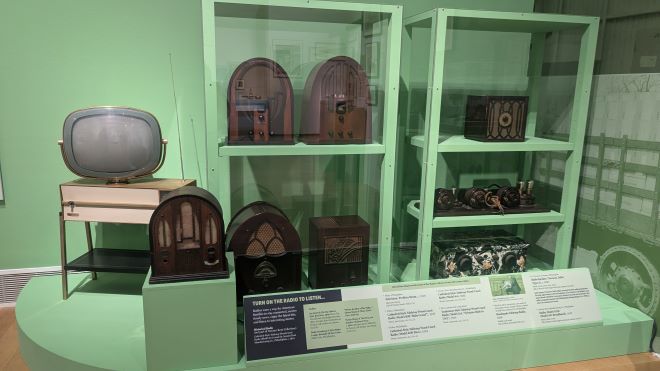
How to tell the story of Philadelphia
Philadelphia established what was initially named the Atwater Kent Museum (after radio manufacturer A. Atwater Kent) in 1938. Kent had purchased and then donated the former Franklin Institute building on South 7th Street to house a collection of the city’s cultural artifacts for public display. Renamed the Philadelphia History Museum at the Atwater Kent in 2010, the institution closed to the public in 2018 due to financial pressures, and the collection was the subject of legal and political wrangling before it was transferred to Drexel University in 2022.
The Atwater Kent collection started with some WPA (that’s the Works Progress Administration, 1935-1943) pieces and was dominated by maritime and science-related objects, which was the style at the time. In the late 1930s and 1940s, corporations regularly lent their collections to museums, while businesses that weren’t going to survive the Depression sometimes found museums an outlet for excess inventory. Over time these items became permanent pieces in the museum’s collection. Other museums, historical sites, and historical societies also offered up artifacts to AKC, resulting in whole categories of items relating to specific industries and occupations like toy manufacturing and firefighting.
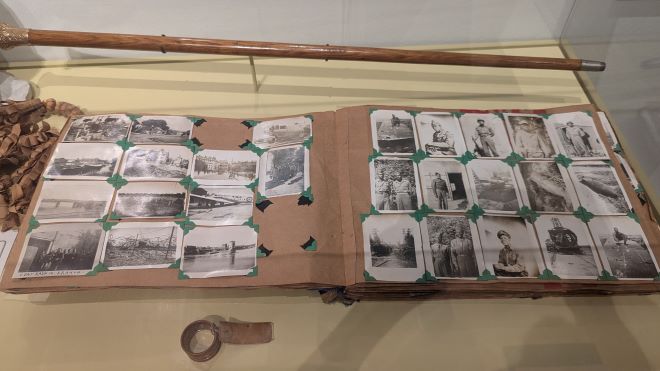
Donations have come from individuals who find antiques in their house or even rescued from the trash, such as a photo album of Black servicemen that someone found on a street corner. Collectors and athletes alike have sent sports memorabilia: Mike Schmidt’s baseball uniform, a Superbowl XV Eagles NFC championship pennant, and retro pennants from the Flyers and the Phillies.
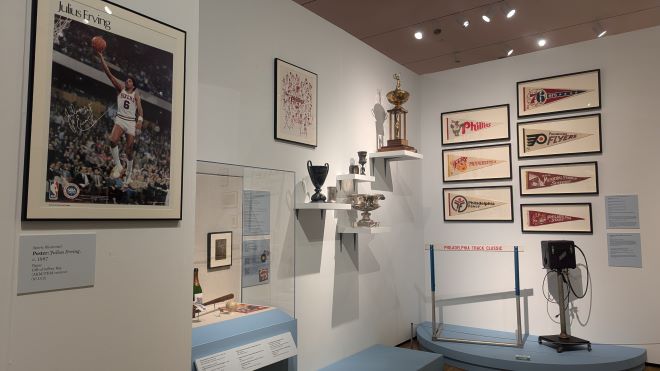
The gaps tend to be contemporary material—not just from the 21st century but even into the mid-to-late 20th century. Those gaps also vary by topic. For example, there are plenty of photos and memorabilia from the 1976 bicentennial, but there’s nothing from 1985’s Live Aid Concert, one of the largest global music events in history.
To decide what was going into the exhibition, the curatorial team first had to come up with themes and categories to organize the extensive array of objects. As the exhibition evolved, they had to select objects that best represented those themes. They had to be sure that the pieces were displayable, and that their condition was good enough to present them to the public. “We had a lot to choose from,” Swigart says. “And it was hard to choose, there’s so much great stuff.”
One of Swigart’s favorite pieces is a panoramic photo of the 1876 Centennial Exposition, which, at the time it was taken, was the largest panoramic photo ever. Of the 200 buildings constructed for the Centennial, only four exist today.
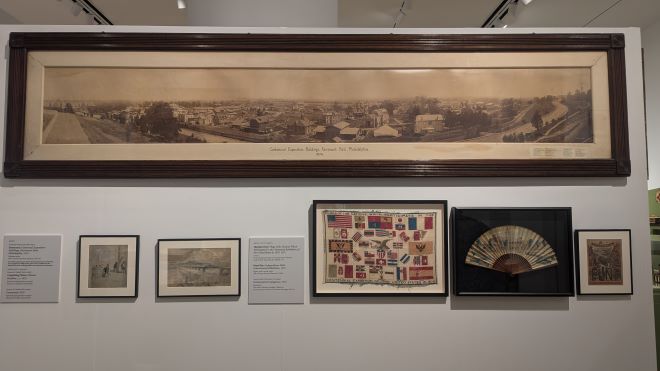
Philadelphia revealed through interactive elements
Drexel Students contributed digital interactive exhibits, including onscreen excerpts of a diary that chronicles a young woman’s visit to the 1876 Centennial Exposition, illustrated with historical images from the Collection. There’s also the jacket of Neil Benson, a local photographer and activist. Benson’s jacket and its 749 pins are displayed beside a 3D rendering visitors can turn, examine, and explore to understand the causes the buttons represent.
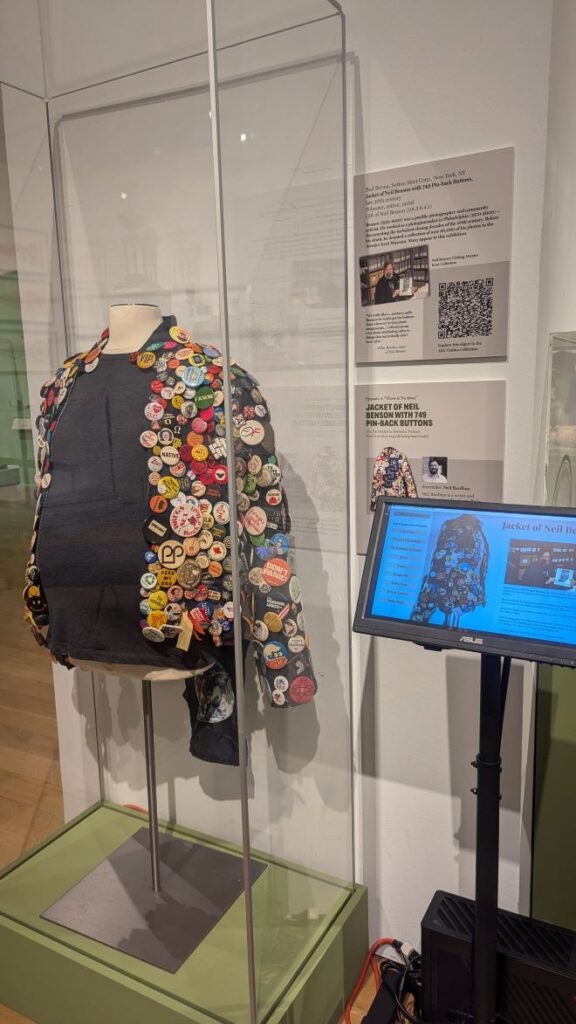
There is also a 10-episode podcast series that accompanies the exhibition, The Philadelphia Revealed Podcast, produced by WHYY and hosted by Jamie J. Brunson of First Person Arts. New episodes are released every Wednesday, allowing listeners to hear about an object in the collection through First Person Arts storytellers. This week’s episode featured Yahya Moore, a returning citizen who served 25 years before he was exonerated, finding a deep connection to abolitionist John Brown’s handcuffs.
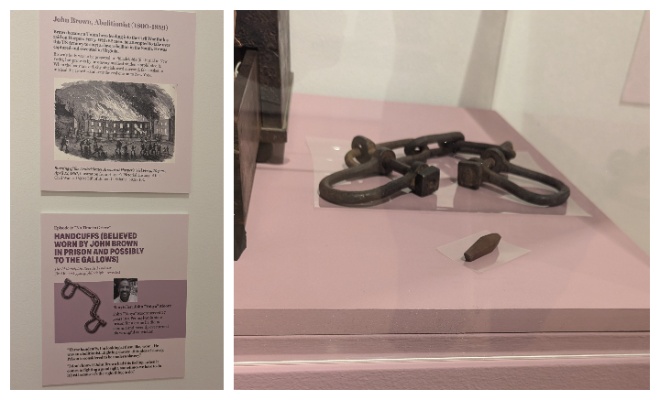
“We used the historic objects as a jumping-off point for these various storytellers to talk about their experience,” says Swigart. “What was the inspiration of these various historic objects to you and your life, and how does that relate? Because it’s all Philadelphia history regardless of if it happened a week ago or 300 years ago.”
That’s also what they’re asking visitors to do. Thanks to a collaboration with First Person Arts, visitors to the exhibition can “find and share” their own stories by picking up one of three themed storytelling booklets upon entering, finding an object that sparks their own story, and writing about it. First Person Arts is collecting those stories, which will be incorporated into the history of the objects.
PAFA is planning additional educational programming and events in conjunction with the exhibition, such as guided tours and family days, which will be announced throughout the year. Once the exhibition ends, everything on display will be returned to storage, but the goal for AKC is to have the institutional loan program in place by then, allowing other institutions and organizations to take items from the collection on loan for display. There are still some lingering legal issues to iron out following the transfer of the collection to Drexel. But to ensure the collection remains a public cultural resource, Drexel is opening access through an Online Collection Database.
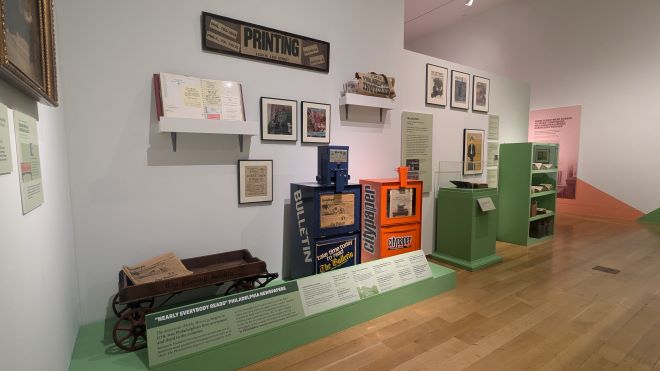
Swigart wants visitors to keep one thing in mind above all else: “History is important. And their history is important. And it’s important to the local community, the regional community and beyond. And sometimes it’s the little things that you’re not thinking about that still tell a great story. That ephemera or even just an invitation, the want ads — who knew that The Bulletin, which was 134 years old, would go out of business? There’s the last copy of the newspaper.”
Swigert gestures to a blue coin-operated newspaper dispenser on display with a caramel-colored Philadelphia Bulletin pressed against its glass. On the front page is printed its own obituary, written by the reporters and editors of the paper.
“That seems so bizarre,” she says, “but it’s kind of a good Philly thing.”
Philadelphia Revealed runs through December 1 at PAFA in the Samuel M. V. Hamilton Building at 128 N. Broad Street. Operating hours are Thursday and Friday, 10am to 4pm, and Saturday and Sunday, 11am to 5pm. Admission will be waived for anyone with a Drexel ID. The exhibition will be free to the public on September 26, September 27, October 6, and November 24.
![]() MORE ON PHILLY HISTORY
MORE ON PHILLY HISTORY



